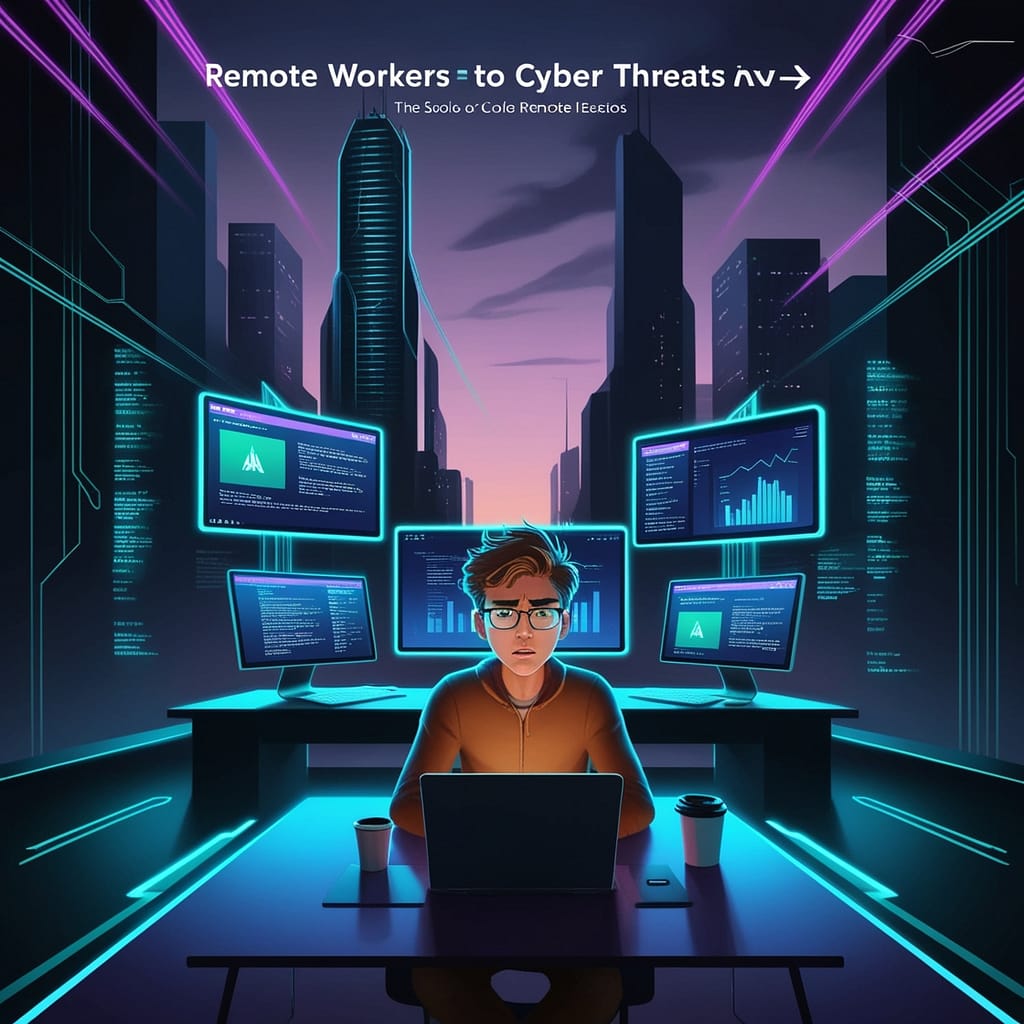The rapid shift to remote work, accelerated by the COVID-19 pandemic, has transformed how businesses operate and how employees engage with technology. While remote work offers flexibility and convenience, it also presents unique cybersecurity challenges. Cyber threats targeting remote workers have surged, prompting organizations to reassess their security measures. This article explores the major cyber threats in the age of remote work and provides practical tips to help you stay secure while working from home.
The New Cybersecurity Landscape 📊
As remote work becomes a permanent fixture for many organizations, cybercriminals are increasingly exploiting vulnerabilities associated with this shift. Key factors contributing to the rise in cyber threats include:
- Insecure Home Networks: Many employees use personal devices on home Wi-Fi networks, which may lack the security measures typically found in corporate environments.
- Increased Use of Collaboration Tools: The widespread adoption of remote collaboration tools has created new attack surfaces for cybercriminals to exploit.
- Human Error: With employees juggling work and home responsibilities, the risk of falling for phishing scams or making security missteps has grown.
Common Cyber Threats Facing Remote Workers 🔍
- Phishing Attacks: Phishing scams remain one of the most prevalent threats. Cybercriminals use deceptive emails, messages, or calls to trick employees into revealing sensitive information, such as login credentials or financial details.
- Ransomware: Ransomware attacks are on the rise, with cybercriminals targeting remote workers to gain access to corporate networks. Once inside, they can encrypt critical data and demand a ransom for its release.
- Malware and Spyware: Malicious software can be inadvertently downloaded when employees engage with infected websites or attachments. Once installed, malware can steal data, monitor user activity, or even provide remote access to cybercriminals.
- Public Wi-Fi Risks: Working from cafes or shared spaces exposes remote workers to the risks of using unsecured public Wi-Fi networks, where attackers can intercept data transmissions.
- Device Theft: With employees often working from various locations, the risk of laptops and devices being lost or stolen increases, exposing sensitive information.
Strategies for Staying Secure at Home 🛡️
To mitigate these cyber threats and ensure a secure remote work environment, both employees and employers should adopt the following best practices:
- Use a Virtual Private Network (VPN): A VPN encrypts internet connections, securing data transmitted from remote devices. Ensure that employees use a company-approved VPN when accessing corporate networks.
- Enable Multi-Factor Authentication (MFA): Implement MFA to add an extra layer of security. This requires users to provide additional verification (e.g., a code sent to their mobile device) beyond just a password.
- Secure Home Networks: Encourage employees to strengthen their home network security by:
- Changing default router settings, including the administrator username and password.
- Using WPA3 encryption for Wi-Fi connections.
- Regularly updating router firmware to patch any vulnerabilities.
- Educate on Phishing Awareness: Provide training sessions to help employees recognize phishing messages and understand safe browsing habits. Regular phishing simulations can reinforce this training.
- Regular Software Updates: Encourage employees to keep operating systems, applications, and antivirus software up to date to protect against known vulnerabilities.
- Use Strong, Unique Passwords: Employees should use complex passwords for different accounts and consider employing a password manager to simplify password management.
- Limit Sensitive Data Access: Implement role-based access control to limit employees’ access to sensitive information based on their job functions. This helps reduce the impact of potential breaches.
- Create an Incident Response Plan: Establish a clear protocol for responding to cybersecurity incidents. Ensure employees know whom to contact and the steps to take if they suspect a security breach.
Conclusion: Embracing Security in a Remote Work Culture 🌟
The rise of remote work has transformed the workforce but also introduced new cybersecurity challenges. In this evolving landscape, staying secure requires a combination of technological solutions and employee education. By adopting best practices and fostering a culture of cybersecurity awareness, organizations can mitigate the risk of cyber threats and protect sensitive information.
As we continue to navigate the complexities of remote work, remaining vigilant and proactive about cybersecurity is paramount. Together, we can create a safer digital environment for all remote workers. Stay secure, and thrive in the remote work revolution! 🚀



